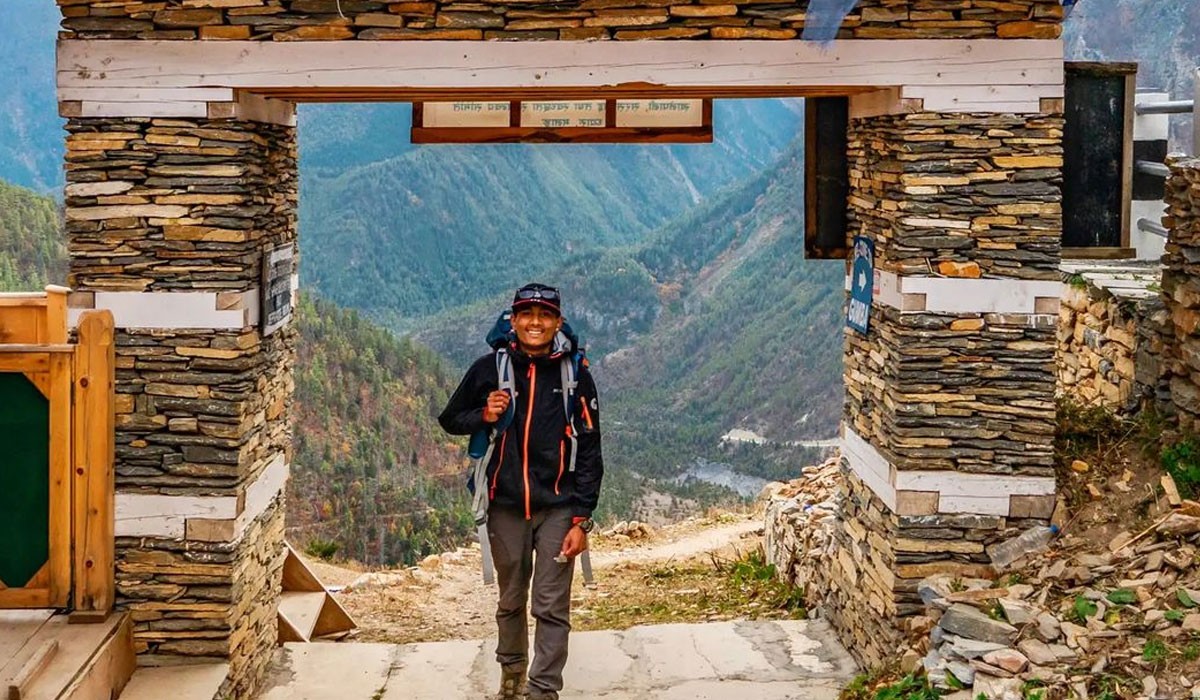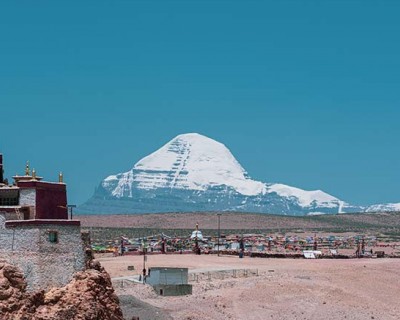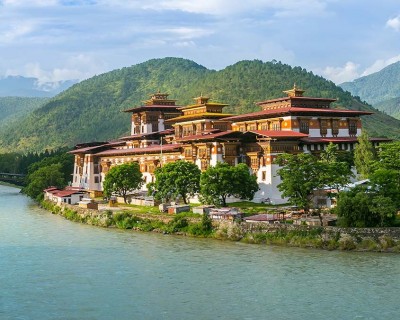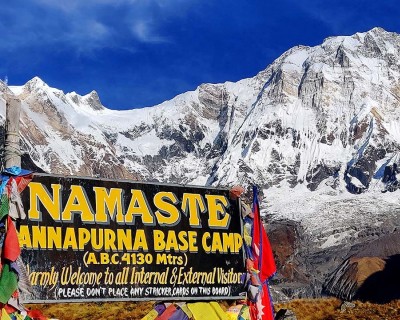Annapurna Circuit Trek in May - General Overview
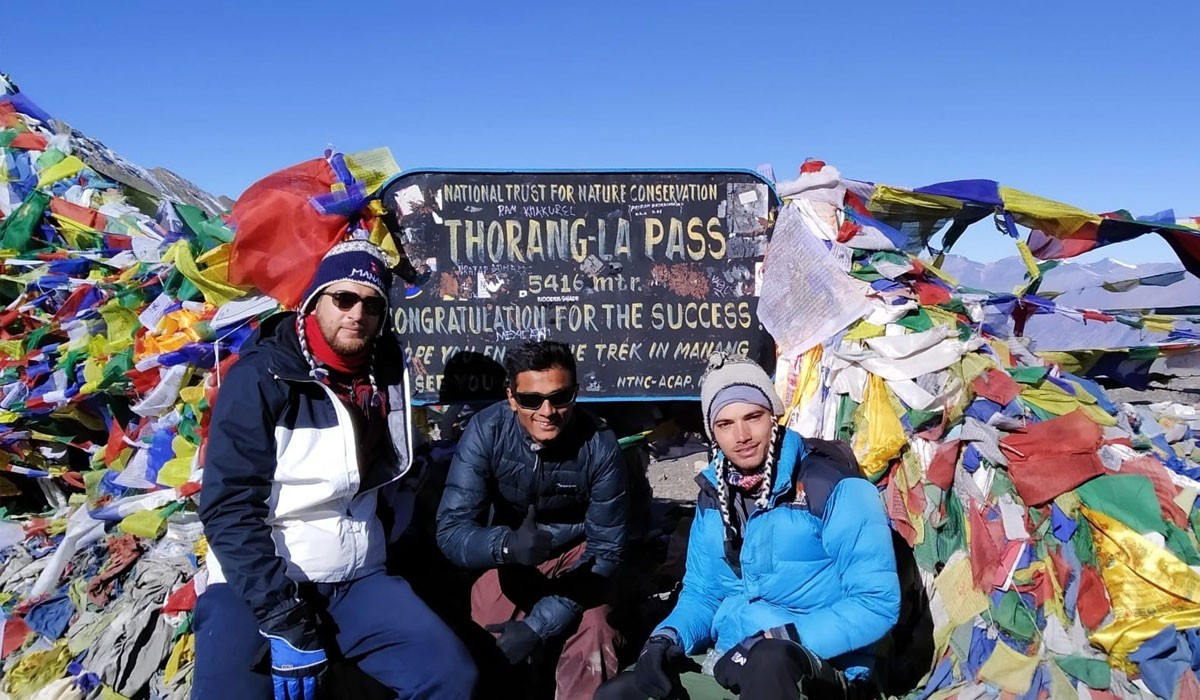
Depending on the package you choose, the starting point of your adventure may vary. Some packages include a sightseeing day at Kathmandu, while others start with a scenic drive from Kathmandu to Chame or Besisahar.
The duration of the standard trekking package for Annapurna Circuit Trek in May is about 10-21 days. The duration may vary according to the itinerary plans that comprise route, highlights, and side detours in the region.
In a standard trekking package, your adventure in the Annapurna region will commence with an exciting drive from Kathmandu to Ngadi [930 meters/ 3,051 feet]. Then, you will start trekking on the gradually inclining trail, exploring the enroute highlights like Bagarchhap [2,160 meters/ 7,086 feet] and Chame [2,710 meters/ 8,891 feet].
The further trekking part in this exploration takes you to the high elevation points of the region, like Lower Pisang [3,240 meters/ 10,629], Manang [3,540 meters/ 11,614 feet], Yak Kharka [4,120 meters/ 13,517 feet], Thorung Phedi [4,560 meters/ 14,960 feet], Muktinath [3,802 meters/ 12,473 feet], and Thorung La Pass [5,416 meters/ 17,769 feet].
Trek Difficulty
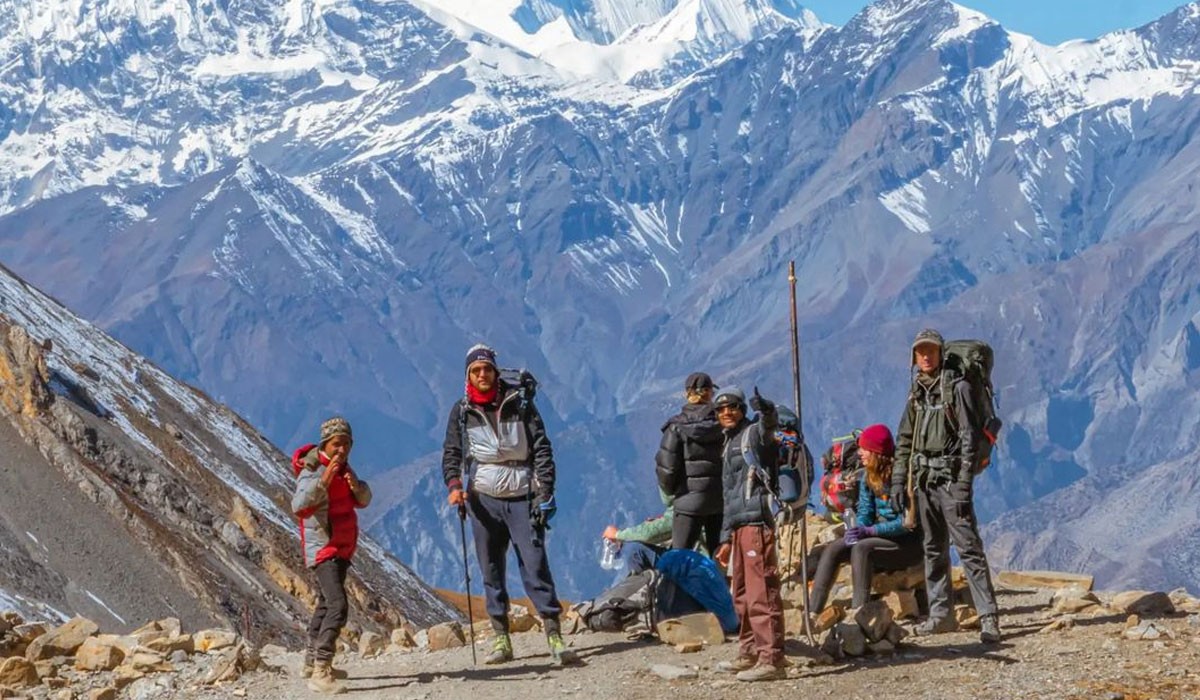
Annapurna is a mainstream trekking adventure in Nepal, and it is one of the most popular Himalayan explorations in the world. Known for its unprecedented natural beauty and culturally enthralling trail, you should definitely give this route a chance if you love Himalayan exploration.
The Annapurna Circuit Trek in May is at a moderate level. You can take part in this mainstream trekking adventure of the Himalayas, even if you are a beginner. Unlike other high-altitude trekking adventures, the Annapurna circuit in Nepal has a mild difficulty level and doesn’t have any technical sections.
Still, this is a high-altitude adventure and nothing like your short hikes on the weekend. There are several difficulty factors of this adventure that you should be on the lookout for.
Acute Mountain Sickness(AMS): With the rise in altitude of the destinations in your trekking, the risk of altitude sickness also significantly increases. It gets difficult for the human body to adapt to new altitudes over 2,500 meters without proper acclimatization. So, you will have to be aware about symptoms of altitude sickness and follow the necessary precautions to avoid it.
Trekking Distance: During your Annapurna Circuit Trek in May, you will traverse across a total trekking distance of 160 km to 230 km. The total distance depends on the route taken and the visit to the landmarks of the region. So, in overall, you will have to trek about 6-7 hours on average during each day of your trek. If you are not well prepared to take on that much of a physically demanding trail, you might just get exhausted with your day-to-day itinerary.
Remote Regions: The Himalayan trekking adventures in Nepal take you to the isolated part of the region. The technology and establishment in the region are in no way on par with a popular urban tourist hub. You won’t get to call a cab just because you are tired or receive top-tier room service and amenities. This adventure will reconnect you with nature and take you far from the materialized luxury, so visualize your journey and lower your expectations.
What is the Success Rate of Annapurna Circuit trek During May?

Yes, most certainly. The success rate of Annapurna Circuit Trek in May is about 98% to a complete 100%. In its history, even elderly trekkers and children had no problem completing this trek.
With a basic level of fitness and good health, you can easily complete this trek. If you also allocate a few hours from your daily schedules for preparation, you can make your journey even more comfortable. If you do have any medical conditions, you should consult your physician and guide to determine the safest way you can do this exploration.
The only major challenge in this mainstream trekking adventure is the high Himalayan pass, Thorung La Pass (5,416 meters). But, as you acclimatize properly before taking on the pass, it won’t be much of a hurdle either.
Read this next:
Why Annapurna Circuit Trek in May?
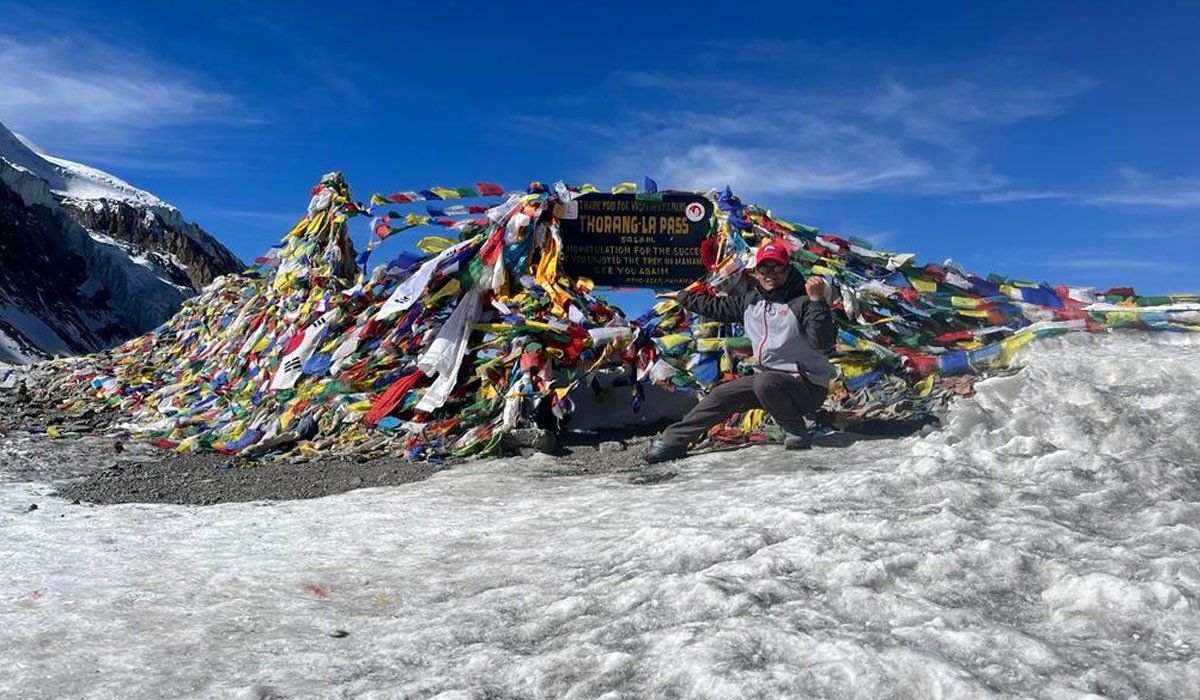
Pleasant Climatic Condition
One of the best things about doing the Annapurna circuit in Nepal during the spring is the pleasant climate. As it is warmer than other seasons but not too hot like summer, the trekking experience is quite comfortable.
The temperature of the Annapurna circuit region during the month of May is around 10°C to 21°C during the daytime. Thus, even during your trek to high alpine altitudes, you will feel comfortable and cozy. It is also much easier to acclimatize properly in the warmer climatic conditions.
Bloom Everywhere
Spring season is known as the blooming season. The landscape of the entire country is brimming with life in this pinnacle season of mother nature. During your Annapurna Circuit Trek in May, the lower trekking trails will be covered with delightful rhododendrons and other colorful flowers.
The melting snow adds momentum to the cascading rivers and charming waterfalls. Even the alpine-wide pastures fed by the melting snow are just dancing to the tune of nature.
Clear Mountain Views
Due to the low precipitation rate of the spring season, the skies are generally clear. You will be able to enjoy the most fascinating views of the Himalayan peaks across the lush landscapes of this season.
Enjoying the epic views of the pristine snow-clad peaks with blue sky in the background and the stunning landscapes of the spring season in the foreground will add a magical experience to your exploration.
Wildlife Exploration and Birdwatching
Spring is just the blooming season for the vegetation of the Annapurna region. The diverse birdlife and wildlife of the region are also busy enjoying the nectar of nature during this season. That is why you will have more chances to encounter the endangered wildlife of the Annapurna Conservation Area during your Annapurna Circuit Trek in May.
Moreover, you will also have the opportunity to take your time with the birdwatching. The migratory species that cross continents to enjoy the warm sunny days will be nestling in the region. So, you will also get the chance to take the perfect shot of the fascinating wildlife and birdlife of the region in this month.
Pre-Monsoon Tranquility and Less Crowd
Even though the spring season receives more crowds than the autumn season, doing Annapurna Circuit Trek in May introduced you to a less traversed trekking route. As this month is also considered the pre-monsoon month, most of the trekkers plan their exploration for the mid-season.
You will be able to enjoy the tranquil beauty of this mainstream trekking region without having to worry about the crowd. This will also provide you with the opportunity to have more intimate interactions with the natives and truly immerse in the experience without having to rush the exploration.
Training and Preparation for Annapurna Circuit Trek in May
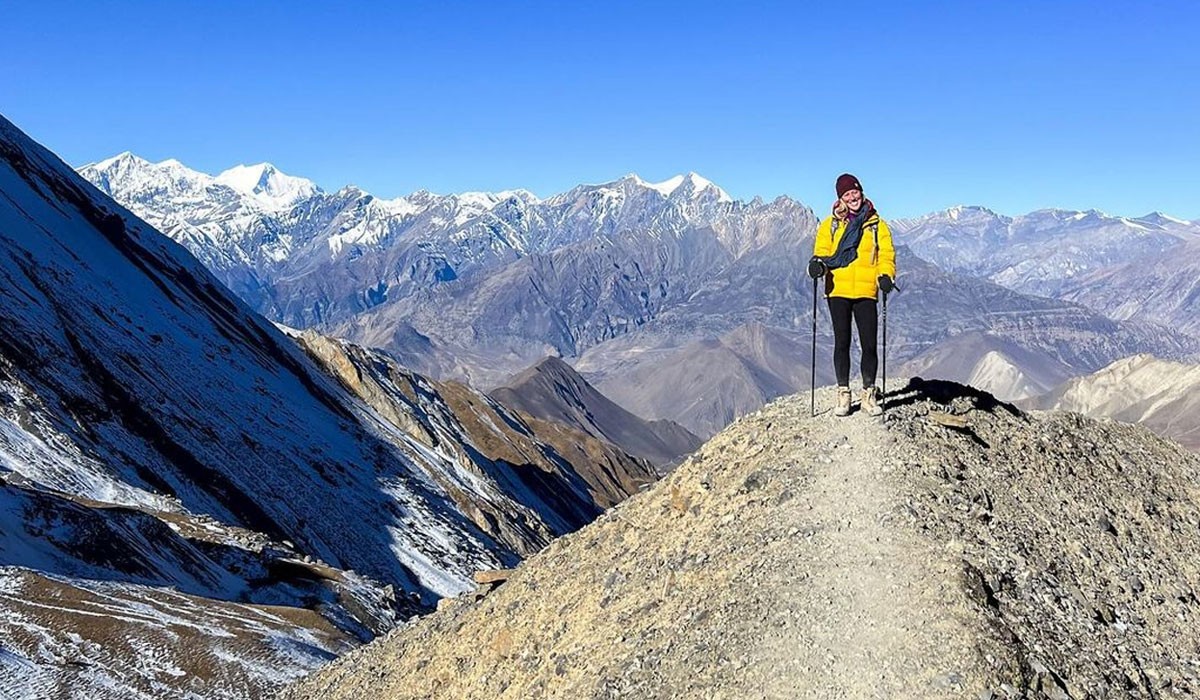
Like any high-altitude trekking adventure in the Himalayas, you are recommended to at least train for 4-6 weeks prior to your actuarial trek. You don’t have to put in a lot of hours for the preparation; just 1-2 hours with a balanced schedule will help you obtain an optimum result.
During your trek, you will trek for long hours each day and gradually climb over to high altitude points. That’s why it is necessary for you to work on your strength and endurance level. Stamina training will also be really helpful to enhance your physical capabilities and make acclimatization more easy.
You can consult with a trainer or guide and do some practice hikes around, if possible, to design an effective training program. Doing practice hikes will help you understand the overall experience you can expect during the actual trek, and you will also get a chance to break into your trekking boots to check their comfort level.
Recommended Strength Exercises: Push up, plank, pull up, deadlift, overhead press, bench press, step up, squat, hammer curl, dip, jump squat, glute bridge, calf raise, etc
Stamina Exercises: Stair climbing, jogging, cycling, swimming, rowing, dancing, aerobics, cardio, mountain climber, jumping rope, etc
Accommodation, Food and Beverage
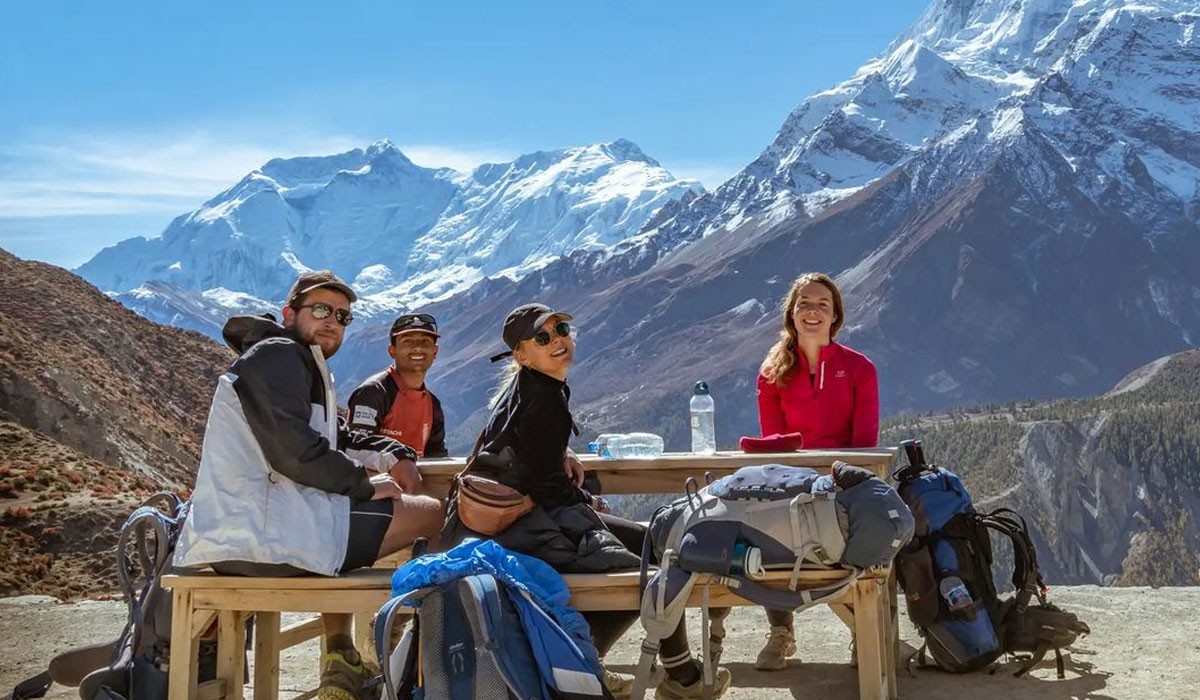
In your standard trekking package, you will spend about 12 nights at the teahouses on your trekking trail and 1 night at Pokhara. If your trekking package includes sightseeing and departure day, you will also spend 3 nights at a star hotel in Kathmandu.
You can expect the accommodation facilities at the star hotels in Kathmandu and Pokhara to be top-notch with all the modern amenities and services. However, the lodging facilities at the teahouses along the Annapurna Circuit Trekking route in Nepal are moderate. If you want a premium feel, you can switch to a luxury trekking experience in this mainstream region.
Your standard trekking package with include a comfortable stay in at well-furnished room at the teahouses that are mostly run by the locals. In most general cases, you will spend the night in a room with two to three adjacent beds in a single room; some of the teahouses have attached bathrooms, and some don’t. You will have to pay separately for hot showers and charging at the teahouses in your trekking route.
Food
Annapurna Circuit Trek is also a food haven if you are a food enthusiast and love exploring cuisines of different cultures. You will be able to enjoy a wide range of region-specific dishes that represent th diverse cultures and traditions of this beautiful country.
On top of that, you will also get the opportunity to enjoy other Asian cuisines (especially Tibetan and Indian cultural dishes) and Western menus along this incredible teahouse trekking experience.
Food menu for Breakfast: Eggs, bread, Tibetan bread, toast, tea, coffee, juice, jam, butter, honey, paratha, chapati, pancake, muesli, pudding, oats, etc
Food menu for Lunch & Dinner: Dal bhat tarkari, dhindo, gundruk, chowmein, momo/dumpling, spaghetti, pizza, pasta, yak steak, thukpa, rildok, porridge, fries, etc
Beverages
Annapurna is a mainstream trekking region in the country; like food, you will also have to opportunity to explore the diverse range of drinks available in the region. From freshly squeezed juice, canned juice, and energy drinks to local alcoholic beverages and branded hard drinks, you can choose from a diverse range of collections.
However, it will be best if you put the alcohol farther from your system during this trek. The risks of trekking under the influence are significant at high altitudes, and at the same time, it also complicates the acclimatization process. So, try sticking to fresh and clean drinking water, recommended volume of 3-4 litersper day.
You will be able to easily refill your bottles at the water stations along the trekking route. The recommended water stations have clean and pure water that is directly sourced from the Himalayas. Still, use purification to make the water safer, or you can also buy boiled and filtered water at the teahouse for about US$1 to US$ 2 per pot.
Safety Consideration During Annapurna Circuit Trek
Your trekking expedition is handled by industry-leading experts who have years of experience in the field and the region. The trekking adventures are led by government-licensed guides who are exceptionally fluent in English communication. You can also request guides who have mastered their communication skills in different languages if English is not your preferred choice.
Similarly, the guides are also trained by the Kathmandu Environmental Education Project (KEEP) for first aid and high altitude-related sickness. So, you will be in safe hands during your Annapurna trekking adventure. Furthermore, your guide will also keep us posted about your overall journey and conduct a health inspection to see how well you are during each day of your adventure.
We also do transport the supplementary oxygen if you request it or arrange it from the teahouses at high altitudes. In case of any health-related issues, your guide will properly coordinate with us and make the call for your transfer to the local health station or transfer to Kathmandu via helicopter without any delays.
Packing and Gear
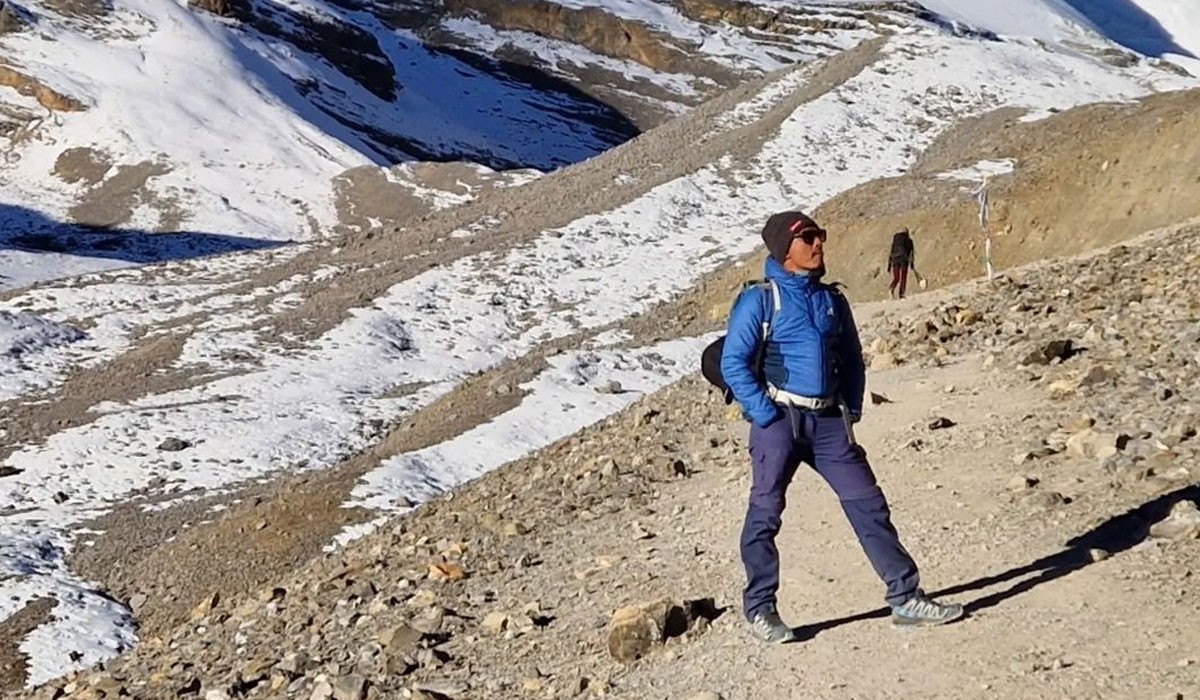
You should make the packing list for this remarkable Himalayan adventure by considering the vary weather and climatic conditions from lower trails to the high alpines altitudes. Similarly, the remoteness of the region is another factor that you should pay attention to when making the right packing choices.
Here are a few of our packing recommendations for reference. You are recommended to travel as lightly as possible.
For Clothing
- Sun hat, woolen hat, beanie
- Neck scarf, gaiter
- Base layers, thermal top
- Half and full t-shirts
- Waterproof/windproof jacket
- Light down jacket
- Lightweight, quick-drying trekking pants
- Thermal trousers, waterproof trousers
- Trekking shorts
- Moisture-wicking socks (several pairs)
- Trekking boots
- Sports shoes
- Sandals/ slippers
For Personal Hygiene
- Toothpaste and toothbrush
- Soap, shampoo
- Sunscreen cream, body lotion, lip balm
- Foot powder
- Small mirror
- Nail clipper
- Wet wipes
- Quick drying towel
- Tissue paper, toilet paper
- Female hygiene products
- Personal medication (if any)
- Small first-aid kit
For Gear and Equipment
- Sunglasses
- Trekking poles
- Sleeping bag
- Headlamps, flashlight
- Ankle support, waterproof gaiter
- Packing sacks, waterproof bags
- Backpack/daypack
- Binoculars, camera
- Powerbank, solar charger
- Water bottle, thermos flask
- Entertainment set
- Universal charging cord
- Journals, magazines, and pens
- Map, GPS device
**Note: Don’t forget enough cash in local currency to buy snacks and shop for souvenirs along the trekking route**
Some Helpful Tips for Trekking in May
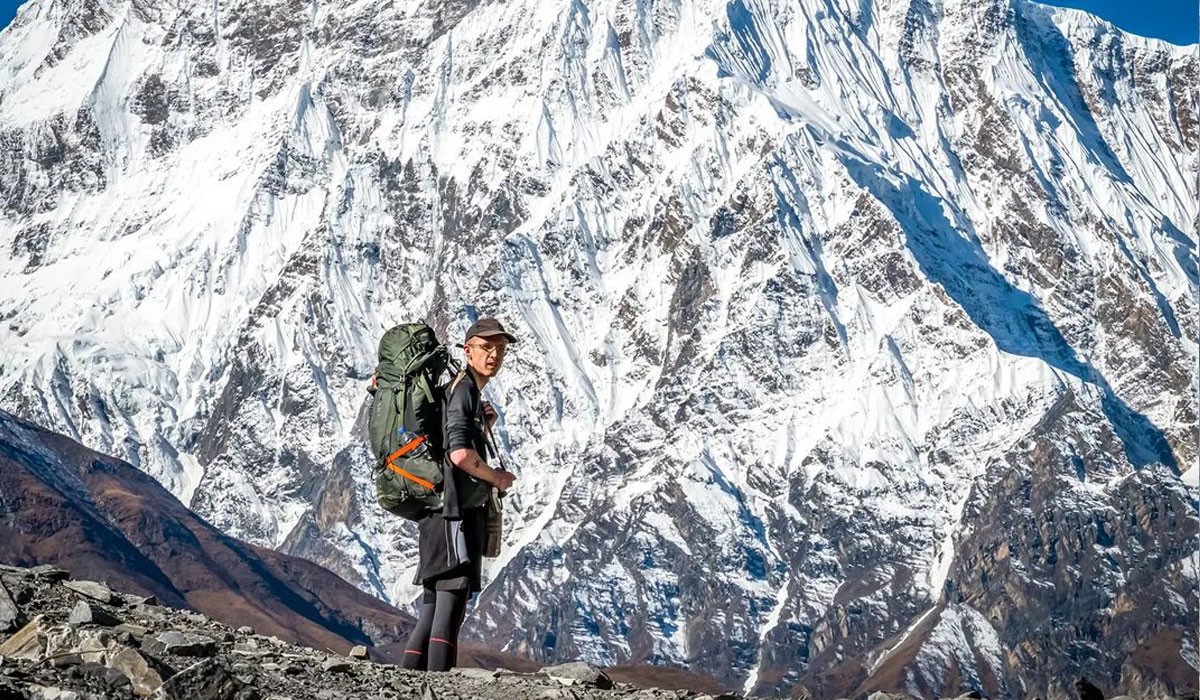
Don’t forget to pack the right gear and clothes suitable for the occasion
- Strictly follow the instructions of guides and porters; they are native to the region and are familiar with it like the back of their hand
- Don’t rush your trekking adventures, and take it slow; Himalayan trekking adventures in Nepal are designed for you to acclimatize as you move along your trekking trails
- Stay hydrated and eat a balanced diet
- Be attentive to your body language, and don’t neglect any symptoms related to altitude sickness
- Communicate properly with your guide in case of any difficulties or complications
- Always pay attention to your surroundings, be cautious while exploring high cliffs or ridges
- Learning navigation skills can be helpful
- Carry altitude sickness medication like Diamox or Nifedipine
- Always respect local culture and traditions
- And finally, relax and enjoy this once-in-a-lifetime adventure
